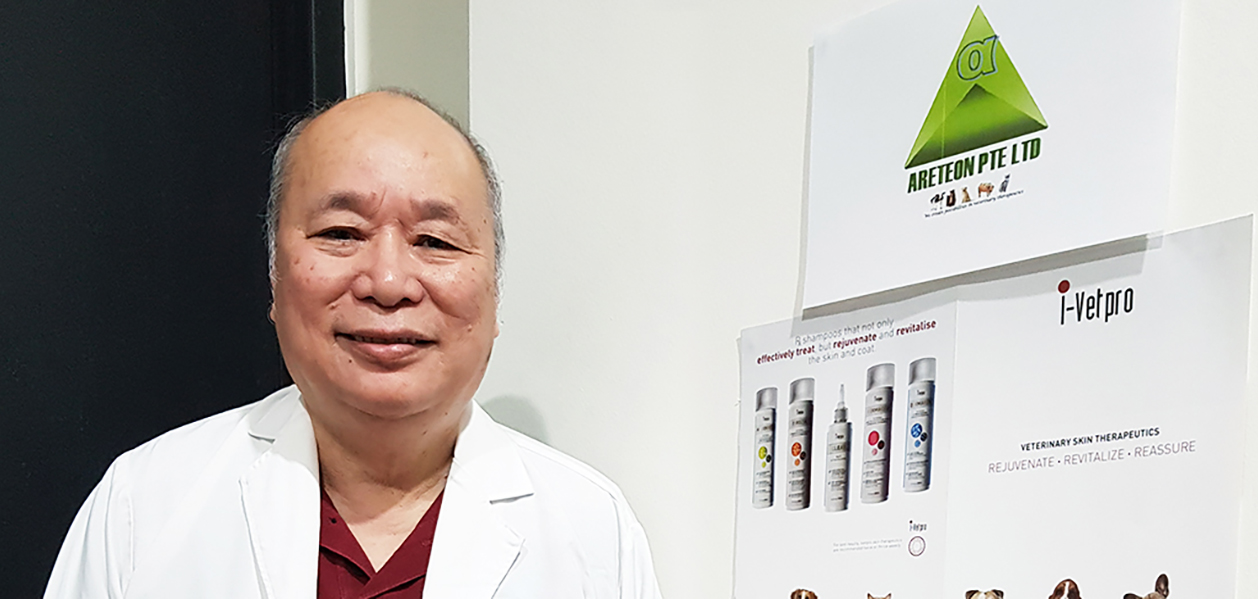From pets to products for people
Through open innovation, Areteon has found success in transforming emerging veterinary technologies from prototype to product.
Are you a cat or dog person? Regardless of your preference, it’s safe to say that most people have owned a pet at some point in their lives. But whether you’ve ever had a googly-eyed goldfish or a playful puppy, pet ownership isn’t all just fun and games. It involves considerable responsibility and due diligence, especially in areas of grooming, diet and health.
While America remains the largest market for pet products, Asia is indisputably the fastest growing market. In China, the demand for pet food alone is predicted to grow at a compound annual growth rate of 28.9% and reach US$6.125 billion by 2022, according to analysis by Euromonitor International.
Despite the soaring demand for veterinary care products, many emerging technologies still fail to fulfill consumer demands for safer, more cost-effective and innovative products. As a result, these products also fail to enter the market.
Adopting an open innovation mindset, however, has helped veterinary care company Areteon Pte Ltd address their customer’s needs and successfully commercialise their products. In this interview with IPI, Areteon founder and CEO Mr Robin Low shares the benefits of open innovation, and how it has helped the company tap into the global animal health market.
1. What is the core competency of your company?
We are a leading animal health company that specialises in veterinary dermatology, feed supplements and therapeutics. Areteon’s value lies in the wealth of intellectual properties we possess from transforming early-stage technologies into commercial-ready products. Currently, we are also diversifying our repertoire beyond the veterinary field, offering human dermatological and personal care products as well.
2. Was there a turning point in your company’s history that convinced you that open innovation was the right way to go?
From the very beginning, our company’s mission has been to harness technology through in-house research and open innovation. In particular, we hope to bridge the gap between early-stage technologies and consumer demands, bringing innovative products into the market.
To fulfil this mission, we realised that an open technology platform was essential. Not only was this an important avenue for finding potential partners, but it was also a way to acquire complimentary technologies to help commercialise our products.
3. How has open innovation benefitted your company thus far?
For Areteon, open innovation serves as a cross-pollination platform to help us develop our capabilities from conceptualisation to commercialisation. For example, during the conceptualisation phase, we were able to gain valuable market knowledge about which products to prioritise for regions like the European Union.
Commercially, open innovation also gave us a better understanding of things like regulatory requirements or standard operating procedures that we have to follow to obtain approval for our products, such as with the European Food Safety Authority or the US Food and Drug Administration.
4. How do you encourage a culture of open innovation in your company?
To create a corporate culture of collaboration, we involve staff members right from the start, leading by example to stir up their passion and commitment. While passion is the fuel for innovation and a key driver for an inventive learning experience, we also reward our employees with performance bonuses according to their efforts when the company makes money from successful new products.
5. What are some lessons that you have learnt in the process of engaging in open innovation?
Select your external collaborators carefully if you choose to engage in open innovation; the right collaborator can make a world of difference. In addition, companies should take note of technology matching, integration and execution, as they can impede the progress of research and development. Miscommunication, impatience, clash of cultures and the mismatch of ideas are also some of the common pitfalls in open innovation.
For companies participating in open innovation for the first time, it is critical to plan ahead, identify your own needs and potential pitfalls so that you can avoid them.

